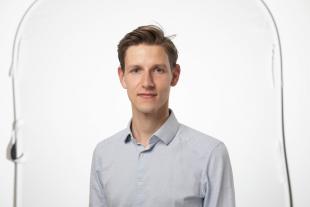| Name | Sebastian Mitel |
| Degree Title | MEng (Hons) Structural Engineering with Architecture |
| Year of Graduation | 2021 |
What path has your career taken since graduation?
My first role was Timber Engineer at Merz Kley Partner - an Austrian consultancy specialising in timber engineering. I found them through a chance mention in The Structural Engineer and a book on Tall Timber buildings. It was a long shot but at the time UK companies delayed hiring, and I wanted to work on sustainable construction.
My second role was Structural Engineer at Price&Myers in London – well established design studio. I worked on projects from concrete towers, though listed mansions to street furniture and sculpture parks. The breadth of experience was amazing. Sometimes I had to use an early 20th century handbook and a generate a new patter for gridshells using parametric tools.
From there, I was recruited for my current role.
What is your current role?
I currently work as Project Engineer for Leko Labs. It is a young, Luxembourg-based start-up, aiming bringing about the next evolution of carbon-negative, material-efficient construction.
Based on architectural schemes, I design the structure of buildings which harness the benefit of company’s automated, mass-customised off-site manufacturing. Typical tasks would include coming up with schemes, creating analytical models, checking building elements and their connections. I worked with 3D modellers to create a digital-twin for the building, ready to be sent for the robots for production. However, there is a lot more to do: discussions with other parties, coming up with new tools, finding new optimisations and testing products in labs. To name a few!
What experiences do you feel helped you get to your current position?
The most important for my current role was the early experience in timber design. The early engagement put me ahead of the curve as the sector is slowly growing more accepting towards the material. That in turn, was made possible because of my push for gaining work experience and reading wide around the topic. The key was also the language, I gained enough confidence in my German during an internship in Frankfurt to apply for graduate roles abroad. All of that build ont he knowledge I gained during my degree.
How have you used the skills and/or knowledge developed during your degree in your career?
The breadth of experience was priceless in understanding the day-to-day issues arising through the interaction of multiple disciplines. It is also very useful in job interviews. There is a great benefit in the design approach – coming up with multiple options, being open to alternatives, flexibility in adapting to different constrains. Many projects are ready portfolio and CV material. This also includes the drawings, which are still a basis of design in structural engineering.
More broadly, the course offer space to develop my own specialisms, which I could then develop further in graduate roles. Experience with architecture, lectures on sustainability and fire engineering turned out to be very helpful when later applying for work close to architects on timber buildings.
What advice would you give to students who are interested in your area of work?
Try to get as wide a perspective as possible early on. The field offers wide breadth of specialism and work environments, all of which may hold a particular appeal. Few graduates from my course worked exactly in the area they planned to at the start of the course. Work placements are particularly useful. Thay can be very hard to get for someone with no prior connection to the industry, but any experience may show you what to look for when the time comes.
Having said that, it is also okay to admit the role does not work for you. Not everything works out perfectly, and there is much credit to wanting to change it.
This profile was published in March 2024



